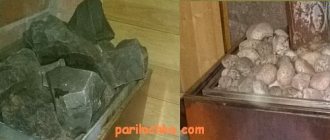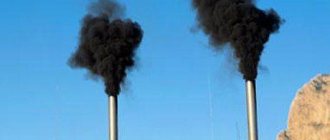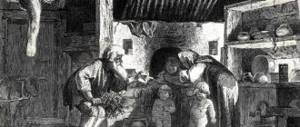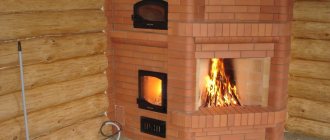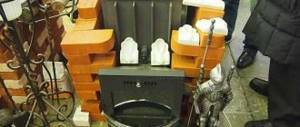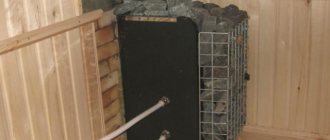When talking about repairing sauna stoves, we most often mean brick devices. As you know, their laying requires special knowledge and experience. If the work was carried out by a qualified stove-maker, the structure will last for decades. However, nothing on earth lasts forever, therefore, sooner or later, any sauna stove begins to require repair. It’s quite expensive to call a stove repairman every time, which means you need to learn how to fix some problems yourself.
Repair of a sauna stove: what happens?
Repairs are divided into three categories:
- Current;
- Average;
- Capital.
The reason for each is the extreme conditions in which all areas of the furnace “work”. This is especially true for the firebox and chimney. As you know, an increase in temperature entails a change in the volume of the material, so a heated brick is always slightly larger than a cold one. Different volumes cause the formation of cracks on the surface of the stove and masonry seams, as well as dark patterns around iron parts (dampers, grates, doors).
Why does the stove smoke?
There may be several reasons for smoke in a house or bathhouse. If you see a small crack, this does not mean that carbon monoxide is coming through it; it may not be through. Therefore, you first need to correctly determine the cause of the smoke and only after that you can start thinking about how to cover up the stove.
- The first option may be to clog the smoke duct with soot. If such a problem is detected, you should simply clean the exhaust gas exhaust system.
- In the second option, cracks may appear in the chimney or the stove itself. In this case, the air supply through the ash pan decreases, the temperature of the exhaust gases decreases, and the combustion process worsens.
- Smoke may occur due to improper internal masonry, or the riser itself may be clogged with brick waste. Such a malfunction can only be corrected by cleaning or major repairs of the chimney; it is necessary to restore the entire chimney.
- Leaving the stove for a long time can also lead to smoke. The riser itself becomes overcooled. But this malfunction can be easily eliminated: before kindling, you just need to burn a little paper, placing it in the cleaning door, and the channel will begin to work in the desired mode.
Maintenance
Basically, minor repairs are caused by a lack of traction, which can be caused by:
- Accumulation of cold air in the chimney due to a long break in the operation of the stove;
- Chimney clogged with soot.
Solving the first problem is quite simple: you need to take not paper for ignition, but dry fuel or a piece of rubber. Under no circumstances is it recommended to use kerosene and similar liquids.
Cleaning a chimney requires more complex actions:
- Light the stove with alder or aspen wood;
- Throw a handful of table salt into the fire and quickly close the damper.
If this does not help, then the chimney will have to be cleaned manually.
Destruction of brickwork
The stove may begin to smoke due to the formation of cracks in the brickwork. They are covered with a mixture of clay and sand, to which salt and powdered asbestos fiber are added (100 g per 3 liters of solution). The last element is necessary to ensure the elasticity of the mixture. The resulting composition should have a medium viscosity (too oily will crack when drying, and too dry will not provide the necessary strength).
If you don’t have time to make your own mixture, you can purchase a ready-made one and mix it according to the instructions.
Replacing burnt bricks
If a brick falls out or burns out, it must be replaced with a new one:
- Thoroughly clean the installation site from dust and old mortar;
- Moisten with water and place the pre-mixed clay cake;
- Dip a new brick in water and coat the top and sides with clay;
- Carefully insert it into the prepared place.
Design features
The first thing that catches your eye is the elongated shape and a rather voluminous firebox. Moreover, if you look at the Feringer sauna stove in a horizontal section, it turns out that the firebox is surrounded by stones on almost all sides. And the heat from the wall of the firebox is transferred to the stones, from them the screen is already heated, and then the room is heated by radiant heat from the screen.
Feringer furnace section
Another feature is the firebox without grates. This is because the top combustion principle is used. With this option, the firewood is lit not from below, as we are used to, but from above. This principle makes it possible to use the heat from burning wood to the maximum. In this position, the coals are constantly in the combustion zone. As a result, there are almost no unburned residues. If there are a few coals left, then only those that burned last.
The next design feature is the presence of a smoke tooth and a side combustion system. They also ensure that more heat goes to warming up the heater rather than escaping into the chimney. The side burning system is a special design in the firebox in which the coals do not lie in the center, but are scattered throughout the stack, igniting the wood lying on the side. After all, in wood-burning stoves this is the zone that burns the worst. In Feringer stoves, the entire surface of the wood burns.
The smoke tooth, located in the upper part of the firebox, twists the flame at the top in a spiral (look at the photo). In this way, the flame stays in the firebox longer, heating up the walls more strongly, and small remnants of it end up in the pipe. But the heat that inevitably ends up in the chimney can be used to heat the steam room. For this, Fehringer has several solutions:
- A heater on a pipe in a traditional and non-traditional design: with a mesh or a decorative carved screen.
- Controlled convector on a pipe. This is a device with a duct system around a main metal pipe.
Diagram of air movement during furnace operation
When installing a controlled convector at its very bottom, immediately after the stove is lit, boiling water is poured. As flue gases pass through, water turns into steam and enters specially formed lamella channels. Since moist air (steam) has a large heat capacity, passing along the wall, it takes away and transfers more heat.
Repair of medium complexity
This group includes the replacement and strengthening of sauna stove parts.
You can fix a loose door by dismantling the brickwork next to it and re-fixing the door with steel wire.
The burnt-out grate is removed and replaced with a new one, which should not lie close to the bricks. It is necessary to leave a gap of 5 mm between the masonry and the grate and fill it with sand.
Leaky pre-furnace sheets cannot be repaired. They are simply replaced with new ones, not forgetting to place a piece of felt soaked in liquid clay underneath.
The best way to heat a sauna: types of fuel
The most suitable option is ordinary firewood. Here are some of their advantages:
- capable of generating sufficient heat;
- allow you to achieve long-lasting and uniform combustion, which contributes to high-quality heating of the room to the required temperature;
- are not explosive;
- they are quite cheap.
All kinds of wood processing products can also be used. As an example, pellets are pre-compressed granular sawdust.
You cannot use coal, everything is connected with the combustion characteristics of this type of fuel. It gives off all the heat quickly enough, after which it begins to slowly smolder. For an ordinary home, this option is ideal, but in the case of a steam room, it is not at all suitable.
It should be noted that wood is ideal for a stove. Obviously, the question immediately arises: what kind of firewood for a bath is the best? Let's consider this nuance in more detail.
Major renovation
Overhaul includes restoring full functionality and replacing broken parts.
Chimney
The destroyed masonry needs to be sorted out. If it is in normal condition, then the chimney is simply plastered.
Lining
When replacing it completely, do not touch the main stove masonry. The stove must be disassembled from the bottom of the ash pan to the top point of the firebox. Do not touch the oven fins. Remove the remaining mortar and lay out a new lining without tying it to the bricks of the walls. The thickness of the seams should not exceed 2 mm.
Strengthening the frame
As already mentioned, places where masonry mortar spills out or small cracks need to be covered with a new mixture. But in some cases, there are so many cracks that they cover the entire stove. Simple coating will not help here.
Of course, it is better to go through the furnace completely, but if there is no time for this, then repairs are performed as follows:
- Horizontal channels 1.5-2 cm deep are punched into the oven;
- The “web” of channels should encircle the entire furnace, since the wire laid along it will tighten the entire frame of the structure;
- Insert the wire into the groove and tighten it well. To do this, you need to carefully twist the wire in several places using a thick nail;
- Plaster the stove again.
I’ll say right away - DO NOT LOOK FOR A READY PRICE LIST HERE - it is always individual! Before repairing a brick kiln, you should determine: 1. The maintainability of the kiln is the technical feasibility of repairs. 2. Cost-effectiveness of repairs—recovery of repair costs (in most cases, we pay for repairs, because laying a new furnace first means dismantling the old one, removing the finishing on the walls and pipes, restoring the seal on the roof, dirt and other discomfort). 3. The possibility of carrying out repairs based on the location of the stove, the temperature in the room, the time of year, if the stove is operated in “country mode”. 4. Other conditions. You can make a preliminary assessment yourself; the final assessment should definitely be done by a specialist who will do the repairs. From practice: Any brick oven requires repairs during operation . This is also influenced by the intensity of operation, compliance with operating rules, operating mode and other factors, which I will discuss in the article “How the stove has to work.” On average, with a good design, a new furnace requires the first repair work after about 8-10 years. Each furnace has its own stress points, which, as a rule, are inherent in the design of the furnace and in the materials used. Often the owner may give in to the HEAT and the stove will not withstand such a “warm” attitude towards it. I had to see how the front wall of the firebox was pushed out by the heat, how individual bricks were squeezed out, about the bursting of cooking plates, you don’t even have to remember the bricks - this is the standard. Most often, repairs are required to the most heat-stressed structural elements of a brick stove - this is the firebox, doors, hob and other elements, depending on the design of the stove. If the need for repairs arises, you can do simple work yourself, for example, strengthen the seams, seal the doors and the hob, but if you need more serious work, it is better to contact a specialist. Most often, the owner of the furnace sees one amount of work, and the master sees another. A good master will not offer you unnecessary work in order to increase the price. A good master has enough orders and simply has no time to do bad work. When choosing a stove repair specialist, focus on his experience and skills in carrying out repairs. For example, I have a rule not to do repairs “in a hurry.” I first analyze photographic materials or videos, but an inspection is definitely always necessary. Only “live” can you understand whether it makes sense to repair it, or whether the “pants” are already so thin that there is nowhere to put patches. It happens that I refuse to carry out repairs, because I myself must be confident in the result. In this case, you either need to find another master - a stove maker, or you should think about reinstalling the stove. The price of repairing a brick stove is always an individual question. The price is formed taking into account various indicators - standard hour, labor intensity, complexity of work, travel to the place of work, duration of work. You should not look for a single price list, because each master has his own price list, as well as, in general, his own approach, his own materials and his own vision of the required solution. If you agreed with one mother on a certain price, this does not mean that another has the same price. Everyone uses their own materials, their own techniques and techniques, each has different experience and skills. What one does in two hours, another will work all day. One can cope in a day, the other will work for three days. In conclusion: “Soft warmth to everyone from your stoves, as well as the smart heads, good hands and caring hearts of those people who will help your stove give you and your loved ones warmth!”
Khimichev Andrey Yurievich Tel.: +7 (925) 391 72 23 (MTS)Tel.: +7 (985) 557 22 76 (MTS)WhatsApp: +79855572276E-mail: Opening hours: Daily from 09-00 to 22-00
CLOSED AND OPEN HEATERS
The laying of stones covers all surfaces of the firebox. Heat is transferred primarily to the stones, due to which the energy of burning wood is used as efficiently as possible and enters the steam room with moderate comfortable radiation.
Closed heater
(stove for sauna)
With a stone lid, a container for water supply and a water distribution system inside the heater. A large volume of stones is heated to a temperature of 500-600 degrees, which is sufficient to produce “light” (fine) steam, while the steam room does not overheat, since the heater is closed.
Open heater
(sauna stoves)
The frame of the top of the lamellas is metal or stone.
The open heater is designed to produce dry air steam. The stones in such a furnace quickly gain heat and release it just as quickly.
Summing up
In this article, we talked in detail about how to light a sauna and what kind of wood is best to heat it with, and looked at all the features of this process. Now all you have to do is prepare a sufficient amount of material and properly prepare the heating device for operation. If you have any additional questions, you can always ask the specialists at the time of purchasing the stove. They will explain to you in detail all the intricacies of the device of a particular model and tell you how to make the product last as long as possible. Modern metal structures are made with high quality; it is enough to follow basic rules such as timely cleaning of the firebox from ash, regular inspection of the chimney and compliance with operating techniques.
Please note that this article is for informational purposes only and under no circumstances constitutes a public offer as defined by the provisions of Article 437 (2) of the Civil Code of the Russian Federation.


